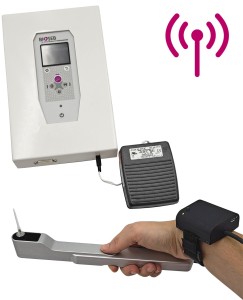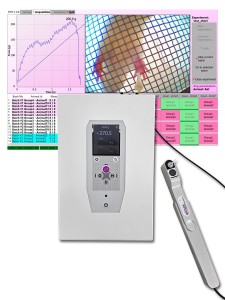Authors
H. Wang, X. Huo, H. Chen, B. Li, J. Liu, W. Ma, X. Wang, Y. Yu, K. Shi
Lab
Department of Anesthesiology, Tianjin Medical University General Hospital, Tianjin, China
Journal
Biomed Research International
Abstract
Background: Neuropathic pain is a chronic and intractable pain, with very few effective analgesics. It involves an impaired cell autophagy process. Hydrogen-rich saline (HRS) reportedly reduces allodynia and hyperalgesia in a neuropathic pain model; however, it is unknown whether these effects involve autophagy induction.
Methods: We investigated the relationship between HRS and cell autophagy in a neuropathic pain model generated by chronic constriction injury (CCI) in Sprague Dawley rats. Rats received an intraperitoneal injection of HRS (10 mL/kg daily, from 1 day before until 14 days after CCI), 3MA (autophagy inhibitor), 2ME2 (HIF-1α inhibitor), or EDHB (HIF-1α agonist). The mechanical withdrawal threshold (MWT) and thermal withdrawal latency (TWL) were tested 1 day before and 1, 3, 7, 10 and 14 days after the operation. HIF-1α and cell autophagy markers in the spinal cord were evaluated by western blotting and real-time PCR assays at 14 days after CCI. Autophagosomes with double membranes were identified by transmission electron microscopy.
Results: CCI caused behavioral hypersensitivity to mechanical and thermal stimulation in the hind- paw of the injured side. HRS improved MWT and TWL, activated autophagy, and increased autophagosomes and autolysosomes in CCI rats. 3-MA aggravated hyperalgesia and allodynia, and suppressed autophagy, while EDHB attenuated hyperalgesia and activated the autophagy procedure and the HIF-1α downstream target gene BNIP3. HIF-1α inhibitors reversed the regulatory effects of HRS on autophagy in CCI rats at 14 days after spinal cord injury.
Conclusion: HRS reduced mechanical hyperalgesia and activation of cell autophagy in neuropathic pain through a HIF1-dependent pathway.
BIOSEB Instruments Used
Electronic Von Frey 4 (BIO-EVF4),Electronic Von Frey 5 with embedded camera (BIO-EVF5)
Source :

 Pain - Thermal Allodynia / Hyperalgesia
Pain - Thermal Allodynia / Hyperalgesia Pain - Spontaneous Pain - Postural Deficit
Pain - Spontaneous Pain - Postural Deficit Pain - Mechanical Allodynia / Hyperalgesia
Pain - Mechanical Allodynia / Hyperalgesia Learning/Memory - Attention - Addiction
Learning/Memory - Attention - Addiction Physiology & Respiratory Research
Physiology & Respiratory Research











![Dynamic Weight Bearing 2.0 – Postural Module [Add-on]](https://bioseb.com/733-home_default/dynamic-weight-bearing-20-add-on-postural-module.jpg)
























 Pain
Pain Central Nervous System (CNS)
Central Nervous System (CNS) Neurodegeneration
Neurodegeneration Sensory system
Sensory system Motor control
Motor control Mood Disorders
Mood Disorders Other disorders
Other disorders Muscular system
Muscular system Joints
Joints Metabolism
Metabolism Cross-disciplinary subjects
Cross-disciplinary subjects CONFERENCES & MEETINGS
CONFERENCES & MEETINGS 
